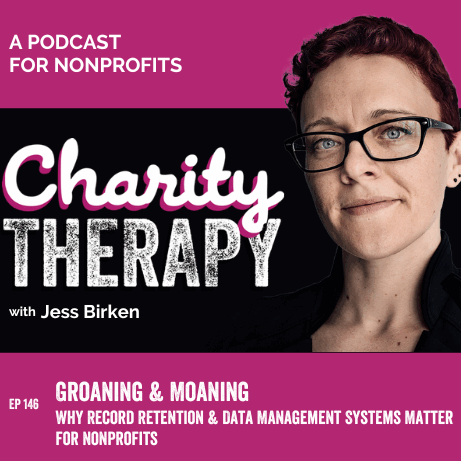Articles & Resources
The Three Committee Structure – Why and How
Many nonprofit organizations have too many board committees. Worse, they rarely get much accomplished. A typical nonprofit has several committees, Finance, Personnel, Development, and of course (my lease favorite) the Executive Committee. So frequently I see nonprofits whose solution to a failure on one committee is to create yet another committee – as if more bureaucracy is a solution to anything. For example, if the Development Committee fails to raise funds, the board may appoint a special Annual Giving Committee. When none of this actually produces any appreciable increase in donations, the board may then create a Major Gifts Committee to go after big donors.
Stop the madness! Nonprofits need to be lean and operate efficiently – not bloated bureaucratic behemoths. Industry best practice in 2018 and beyond is to manage with a simple three-committee structure: Internal Affairs, External Affairs, and Governance.
In addition, there may be an Executive Committee made up of the Chairs from each of the three committees and the Board President/Chair. BUT! This committee’s only purpose is to set the agenda for board meetings – NOT undermining the decision-making function of the board as a whole.
The Three Committee Structure – Why and How
Three Committee Structure Advantages:
- Each board member serves on one committee and focuses on interrelated issues.
- It requires fewer meetings, making less work for staff and board members.
- The accountability lines of the three committees are clear.
- Board meetings can be organized around the three committees’ reports, reinforcing the importance of their work and affording more time for “generative thinking.”
Internal Affairs Committee
This committee focuses on all internal and operational issues coming before the board. These include issues related to finance, investments, capital acquisitions, human resources, and facilities.
Why:
Often, when these issues are put before separate committees, the process is slowed. For example, in the example regarding raises given above, it is better to have the discussion of pay equity and finances occur in the same room at the same time. Similarly, it is folly for a separate Facilities Committee to make plans regarding anything from a boiler replacement to a major building project without reference to the financial impact and thus the Finance Committee. Bringing all internal issues related to expenditures under one committee’s jurisdiction streamlines the process.
External Affairs Committee
This committee focuses on all external issues, including fundraising, public relations, publications (such as the annual report) and marketing.
Why:
These issues often overlap. Public relations efforts should be crafted to help fundraising and vice versa. Also, as described above, nonprofits sometimes attempt to sidestep a failing Fundraising Committee by creating other vehicles. One committee charged with fundraising and other external matters makes it clear where the responsibility lies.
Governance Committee
This committee is responsible for the health and functioning of the board. It recruits and nominates new members, evaluates the performance of the board itself, orients, trains and educates board members, and produces board materials, such as board books.
Why:
This committee is arguably the most important of the three. It is responsible for ensuring the good functioning of the board today and for recruiting and preparing tomorrow’s leaders. It grows out of the Nominating Committee function present in most boards and encompasses the overall health of the board.
The Executive Committee:
It’s traditionally been common for nonprofits to establish an Executive Committee. Usually this committee is charged with the innocuous sounding duty to “take care of issues that come up between board meetings.” Well, guess what, all issues come up “between board meetings” – what ever actually happened on the day of the board meeting, ever? Over time the Executive Committee usually gets out of hand, undercutting the role of the board. It works closely either together or with the ED and gets the inside scoop before the rest of the board. The committee will tend to use their authority to act between board meetings to resolve issues in advance of the next board meeting. As a result, board meetings become not much more than a set of reports by this committee and the actions they have taken. Over time, other board members begin to feel they have no meaningful role in decision-making. Worst case scenario this structure breeds a “secret board” and allows for toxic culture and opportunities for fraud.
Advice: The Executive Committee should organize the agenda and nothing more. The only exception should be a true crisis in which the executive needs help. Any decision that needs to be made between board meetings can easily be decided via written action over email among the full board. Nonprofits that adopt this three-committee structure and that have limited the role of the Executive Committee are significantly more effective as a result.
Article Attachments
Recent Podcast Episodes

151: Give Mark Your Crap! | When a PEO is a Good Fit for Your HR Needs with Mark Bromberg

150: All Press is Good Press? | GoFundMe Creates 1.4M Nonprofit Donation Pages Without Consent with Ephraim Gopin

149: Um, Actually… | How Many Times Should a Nonprofit Board of Directors Meet?

148: Type A Personalities Unite! | When Nonprofits Should (Or Shouldn’t!) Use PEOs for Their HR with Jess Holst

147: Keep Doing You, Boo | Are Nonprofit DEI Initiatives Illegal? With Guest Megan Fuciarelli

146: Groaning & Moaning | Why Record Retention & Data Management Systems Matter for Nonprofits

145: Astronauts vs. Scuba Divers | Can You Convert a Failing Business Into a Nonprofit?

142: Someone Get Me a Flux Capacitor! | What Happens When Your Nonprofit IRS Status is Revoked

